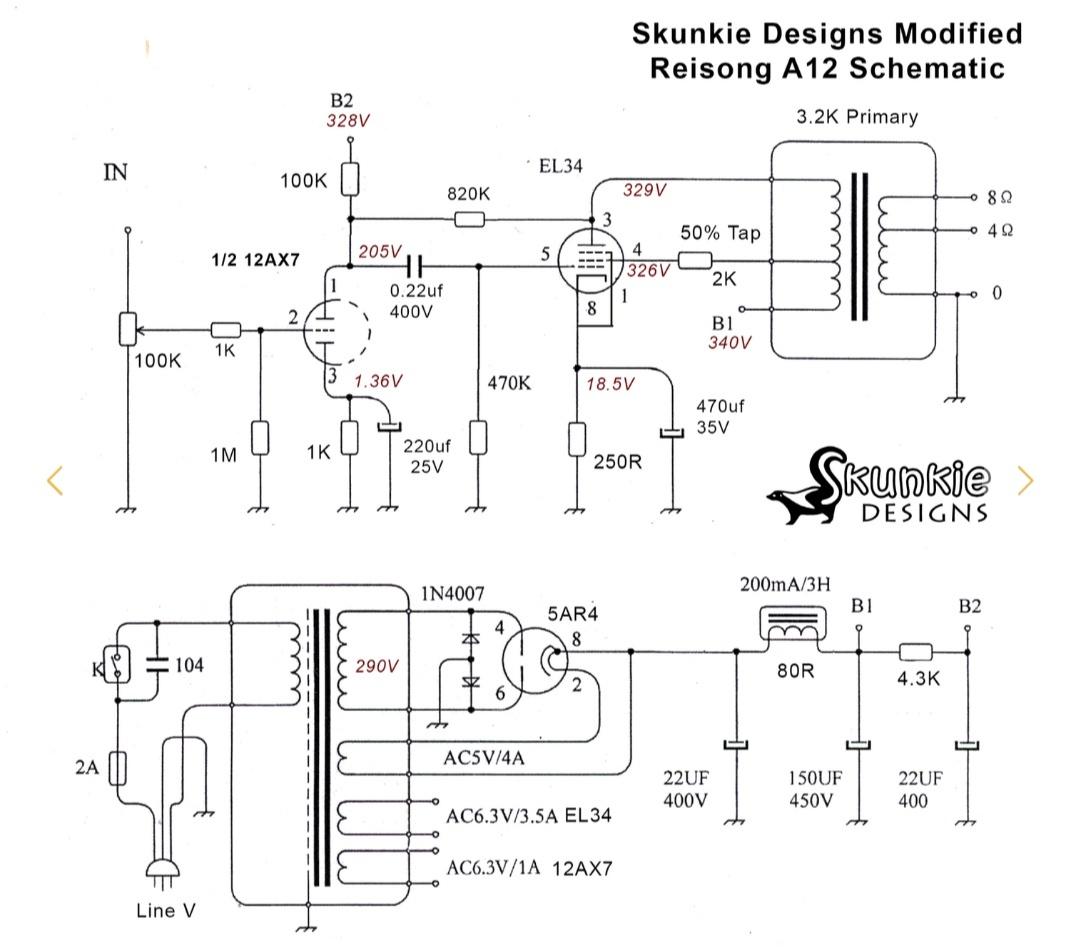Hi all,
I have a Reisong A12 (modified with the popular 'Skunkie' mods) which runs 12ax7 preamp tubes, a 5AR4 rectifier and el34 outputs.
I had the right channel 12ax7 fail about a year ago... Still worked but looked dimmer and produced roughly half volume. Had maybe 500 hours on it. Figured they were cheap Chinese tubes so no big loss.
Replaced both channels with Sovtek 12ax7lps which now have maybe 3-400 hundred hours on them and the same thing has happened. Volume is about half on the right channel... Swapping the 12ax7 moves it to the left side, so definitely the preamp tube that's diminished.
Any tube officianandos have a clue as to what might be causing it before I go poking about inside?
Ta
I have a Reisong A12 (modified with the popular 'Skunkie' mods) which runs 12ax7 preamp tubes, a 5AR4 rectifier and el34 outputs.
I had the right channel 12ax7 fail about a year ago... Still worked but looked dimmer and produced roughly half volume. Had maybe 500 hours on it. Figured they were cheap Chinese tubes so no big loss.
Replaced both channels with Sovtek 12ax7lps which now have maybe 3-400 hundred hours on them and the same thing has happened. Volume is about half on the right channel... Swapping the 12ax7 moves it to the left side, so definitely the preamp tube that's diminished.
Any tube officianandos have a clue as to what might be causing it before I go poking about inside?
Ta



